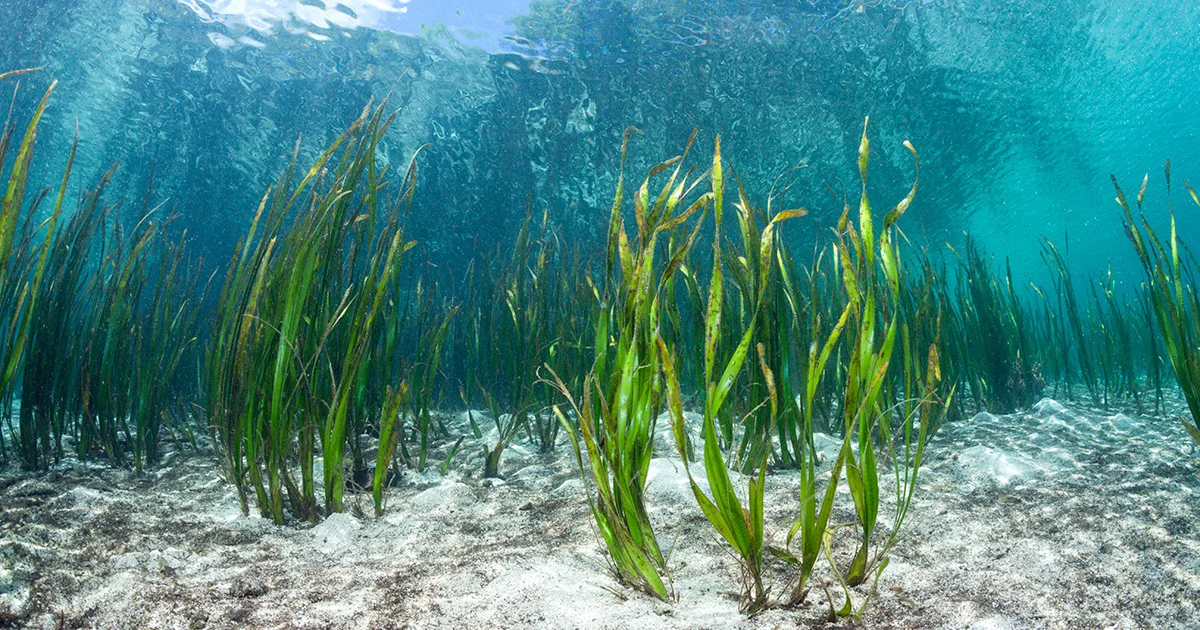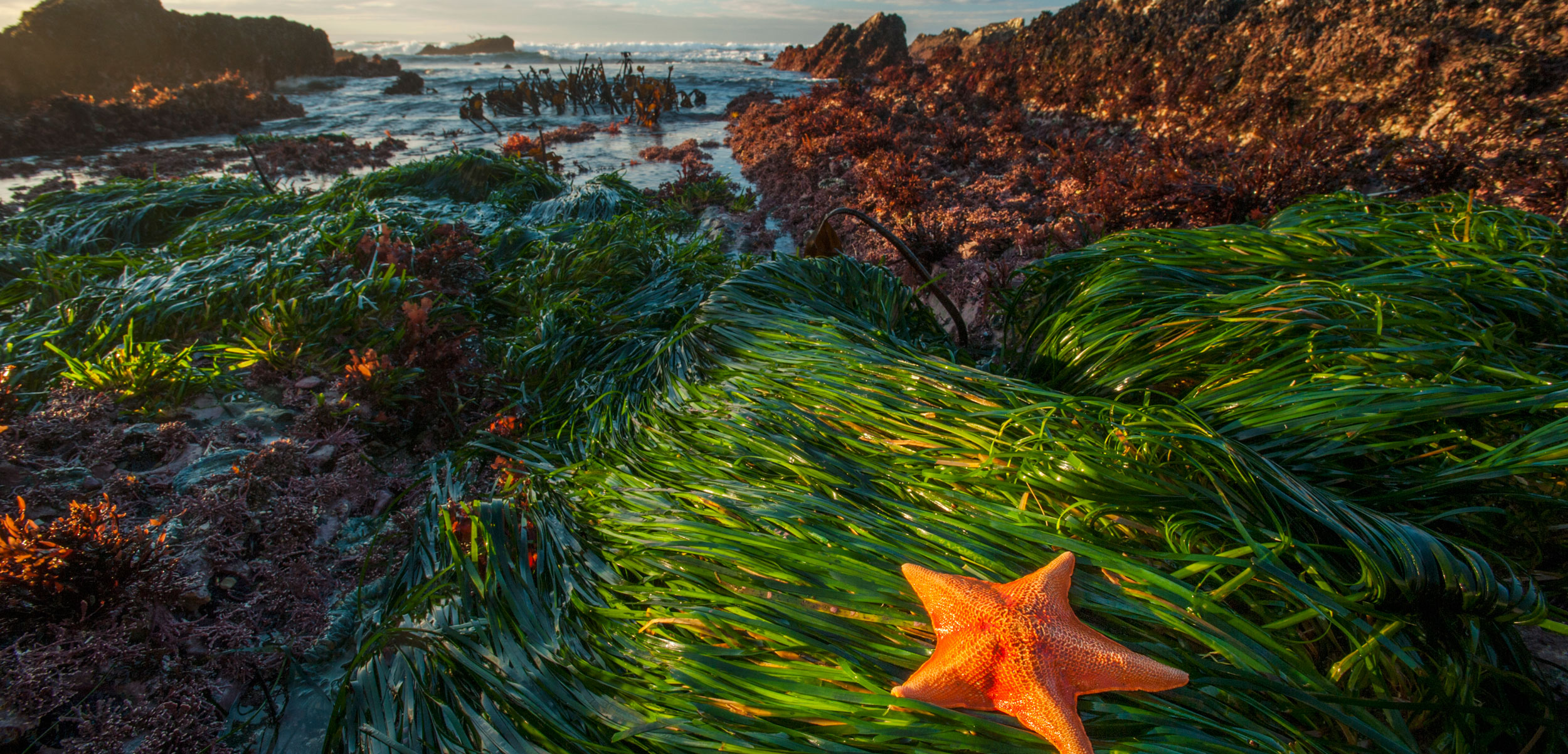Seaweed thrives in the intertidal zones of oceans worldwide, but these habitats pose unique challenges.
To flourish, seaweeds have evolved specialized adaptations enabling them to attach to substrates, withstand wave forces, absorb nutrients, and reproduce in their aquatic realm.
This article explores how the anatomy and biology of seaweed enable its success across diverse marine environments.
How Does Seaweed Adapt to Its Environment?

Seaweeds have adapted to marine environments through specialized holdfasts, air bladders, tissues, reproductive strategies, and symbiotic partnerships.
These adaptations allow seaweeds to attach securely, maintain their position in the water column, minimize water loss, spread offspring, and acquire nutrients needed to prosper in intertidal zones.
Key Points
- Holdfasts anchor seaweeds to rocks while allowing flexibility to minimize drag.
- Bladders filled with gases enable flotation at optimal light and depth conditions.
- Salt-balancing tissues and mucilage minimize desiccation in tidal zones.
- Complex reproductive cycles maximize spore dispersal and colonization.
How Does Seaweed Attach to Surfaces Underwater?

Seaweeds attach to rocks, reefs, or other solid surfaces using a holdfast or haptera for anchorage against wave forces.
Holdfasts are root-like structures made of flexible, branching filaments that grip substrates tightly.
Some species cement themselves in place using calcium carbonate or adhesive mucilaginous stalks.
The strength of attachment must withstand crashing waves and tidal pull.
Seaweeds also adapt through flexibility, allowing blades to streamline and reduce drag.
Sturdy anchoring enables seaweeds to prosper and form dense beds in turbulent intertidal zones.
How Do Different Seaweeds Adapt to Various Ocean Depths?
Sunlight, temperature, nutrients, and wave forces change with ocean depth.
Different seaweeds have certain adaptations to unique niches.
Small, delicate seaweeds grow in shallow subtidal zones with plenty of sunlight for photosynthesis.
Large, dense blades characterize the mid-intertidal zone’s higher wave forces.
Low-intertidal seaweeds cope with long daylight and sun exposure during low tides.
Subtidal seaweeds adapt to low light levels, colder temperatures, and fewer nutrient fluctuations.
Some have air bladders for flotation to access sunlight.
Species distribution relates to adaptations aligning their anatomy and biology with specific depth niches.
How Does Seaweed Cope With Drying Out During Low Tide?
Intertidal seaweeds endure periodic drying and rehydration during tidal cycling.
Adaptations prevent excessive water loss and cell damage.
Thicker, smaller blades reduce surface area.
Mucilaginous secretions retain moisture.
Pigments called phycocolloids bind water.
Air bladders cushion against desiccation.
Enzymes stabilize cell membranes and proteins.
Osmotic adaptations prevent salts from concentrating to toxic levels as water evaporates.
Some seaweeds limit aerial exposure by moving lower during low tides.
Modified cellular biology and body structures enable seaweed to thrive in the punishing intertidal zone.
How Do Some Seaweeds Adapt to Predators?
Seaweeds have adapted chemical, structural, and nutritional defenses against herbivores.
Unpalatable compounds deter grazers and fouling organisms.
Sea lettuce produces rotten egg-smelling hydrogen sulfide.
The bladderwrack has sharp, acidic vesicles.
Some kelps accumulate iodine.
Thick cell walls and tissues resist consumption.
Calcium carbonate or soda straw stiffens seaweeds.
Low nutritional value minimizes appeal.
Size limits edibility.
Mimicry disguises seaweeds as less palatable species.
Underwater forests gain protection through strength in numbers.
Multiple adaptations enhance seaweed survival in the face of grazing pressures.
How Does Seaweed Reproduce in Ocean Environments?
Most seaweed reproduction depends on water for spore dispersal.
Release timing adapts to ocean currents that maximize spore movement.
Spores quickly attach to establish new growth.
Asexual spores form directly on fronds.
Sexual spores require the mixing of male and female gametes.
Timing varies among dioecious, monoecious, and hermaphroditic species.
Some seaweeds reproduce through fragmentation when pieces broken off by waves regrow into clones.
Seaweeds primarily adapted reproductive strategies benefitting from their aquatic medium over land plants’ reliance on wind or animal dispersal.
What Adaptations Help Giant Kelp Thrive?
Giant kelp possesses specialized adaptations enabling fast growth and incredible size in cool, nutrient-rich coastal waters.
Its blades have honeycomb air pockets for flotation toward sunlight.
Stipe water channels transport nutrients.
Holdfasts securely anchor the flexible stalk and blades to withstand waves.
Growth occurs at the blade tips to rapidly maximize surface area.
Adaptations enable giant kelp to form vast underwater forests supporting rich ecosystems.
Without its adaptations, giant kelp could never thrive in the tumultuous, low-light conditions it inhabits.
Does Seaweed Have Any Adaptations?
Yes, seaweeds have specialized adaptations allowing them to thrive in the challenging intertidal and marine environments they inhabit.
These include:
Holdfasts for secure attachment to rocky substrates and reefs
Flexible stipes and blades to withstand wave turbulence
Pneumatocysts or floats filled with gas for buoyancy and flotation
Ability to excrete excess salts and regulate internal ion concentrations
Mucilaginous tissues retain internal water in the marine environment
Varied reproductive strategies maximizing spore dispersal and colonization
Chemical deterrents and low nutritional value discourage herbivory
Mutualistic partnerships with bacteria, algae, and fungi for enhanced nutrient acquisition and growth
These anatomical, physiological, and reproductive adaptations are key for seaweed prosperity in the extreme conditions of the oceans.
How Does Seaweed Survive in Saltwater?
Seaweeds thrive in salty intertidal zones due to specialized adaptations including:
Cell walls and mucilage tissue prevent excess water loss through osmosis
Salt ions are compartmentalized in cell vacuoles to maintain osmotic equilibrium
Some species utilize C4 photosynthesis to acquire CO2 while minimizing water loss
Smaller surface area, crinkled blades, and mucilaginous coatings reduce evaporation
Reflective pigments, evaporative cooling, and blade flexibility moderate temperature
Timing of low tide exposure limits the duration of aerial exposure
These adaptations allow seaweeds to prosper where salt concentrations would dehydrate and damage less adapted organisms.
How Does Seaweed Adapt to Herbivory?
Seaweeds have adapted both physical and chemical deterrents to reduce grazing by marine herbivores. Strategies include:
Producing distasteful or toxic compounds that make seaweed unpalatable
Developing tough external tissue layers resistant to consumption
Incorporating structural defenses like calcite stiffening and sharp vesicles
Synthesizing damage-induced chemical defenses when grazed
Growing in dense beds to reduce the likelihood of being eaten
Choosing low intertidal habitat zones to avoid grazers
Evolving physical and chemical camouflage mimicking other species
Providing little nutritional value to discourage herbivores
Multi-faceted adaptations limit the reward for grazers targeting seaweed, enhancing survival.
What Conditions Does Seaweed Need to Grow?
Most seaweeds require the following conditions for optimal growth:
A rocky substrate or seafloor for attachment of holdfasts
Sufficient sunlight for photosynthesis
Water depth with good circulation and wave action
Suitable water temperatures, usually 50-80°F
Saltwater with average 30-40 ppt salinity
Sufficient nutrients like nitrogen, phosphorus, and potassium
Low herbivory and competition pressure
Clean, unpolluted water
Adaptations aid seaweeds in colonizing varied marine habitats, but growth necessitates adequate sunlight, nutrients, space, and water circulation.
Key Takeaways:
- Seaweeds exhibit remarkable adaptations tailoring their anatomy, biology, and reproduction to the diverse ocean environments they inhabit.
- The diversity of adaptive solutions across species provides continued inspiration.
FAQ
How Do Seaweeds Reproduce?
Seaweeds exhibit both sexual reproductions through spore mixing and asexual reproduction through fragment cloning and viviparous “births”.
How Do Seaweeds Adapt to Wave Forces?
Flexible stems and blades streamline to reduce turbulence damage. Sticky holdfasts provide strong anchorage. Thicker tissues resist pounding waves.
What Symbioses Do Seaweeds Form?
Seaweeds form symbioses with fungi, bacteria, and algae that enhance nutrient uptake, growth, UV resistance, and reef-building capacity.
GreenChiCafe is your source for captivating ocean science and marine biology.
Visit our website to explore more about seaweed ecology and adaptations.
